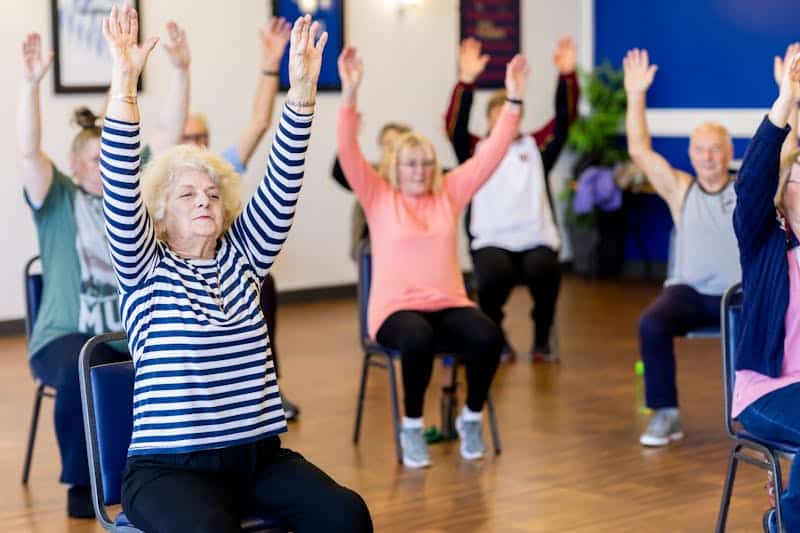Your lungs, the centerpiece of the respiratory system, have a critical function to perform. That is, they transport oxygen into the bloodstream and move carbon dioxide out. Even when you rest, your lungs perform their function diligently to keep you alive.
A human, on average, breathes 25000 times a day, inhaling about 11000 liters of air daily. With every breath, humans inhale air along with dangerous pollutants like chemicals and smoke.
While the lungs are resilient, they aren’t immune to damage or dysfunction. The pollutants inhaled often damage the lungs and make people, especially seniors, susceptible to several conditions. Aging also affects the respiratory health of individuals.
However, seniors can take several proactive steps to minimize their risk of respiratory diseases and keep their lungs healthy. We’ll discuss some of them here.
#1 Quit Smoking
The fastest way to keep your lungs healthy and improve their capacity is to quit smoking.
Exposure to cigarette smoke damages the airways and alveoli (tiny air sacs at the end of the bronchioles). Alveoli are responsible for moving oxygen in and carbon dioxide out of the bloodstream. Damage to these tiny air sacs means they won’t deliver as much oxygen to the tissues as they would otherwise. Less oxygen to tissues harms every other organ in the body.
Smoking is among the leading causes of COPD, or chronic obstructive pulmonary disease, reveals a new brief. Eighty-five to ninety percent of COPD is caused by smoking. This lung disease claims the lives of more than three million people each year. Most cases of lung cancer are also due to smoking.
Quitting tobacco products can help lower your risk of developing COPD and lung cancer. Giving up smoking isn’t easy. However, prescription nicotine, such as an inhaler or nasal spray, can help. Nicotine gum, patches, and lozenges are also effective in helping people stop smoking.
#2 Stay Physically Active
Physical activity has been demonstrated to improve lung function and minimize the risk of respiratory diseases.
According to the CDC, older adults must stay active for 150 minutes a week of moderate-intensity activity or 75 minutes a week of vigorous-intensity activity. Brisk walking is an excellent example of moderate-intensity activity. A fun way to incorporate walking into your daily life is to take your infant or toddler grandchild on a walk in their stroller. Or, consider walking your grandchildren to school.
Once a week, consider jogging or running because they are great examples of vigorous-intensity activity. Yard work such as digging, planting, and raking are other ways to stay active.
Also, aim to exercise regularly for at least 30 minutes per day. Engaging in moderate exercise will make your lungs stronger, so engage in it daily. If you exercise regularly, your body will become more efficient at getting oxygen to your muscles. Over time, you will be able to walk or exercise more without getting out of breath.
If you have a lung condition such as asthma, avoid vigorous exercise. Running, jogging, or cycling fast is a big no-no! Instead, consider chair yoga. This type of exercise involves mindful breathing techniques along with stretching. One benefit of chair yoga stretches for seniors is that they increase lung capacity and oxygen intake.
Reverse arm hold can help decrease breathing difficulties. You can try that. Extended mountain poses, forward folds, and cats or cows are other chair yoga poses worth trying. However, be sure to consult a medical professional before starting any exercise.
#3 Stay Hydrated
Keeping yourself properly hydrated is essential for maintaining healthy respiratory function.
You must drink eight to ten glasses of water daily to keep your lungs hydrated. Drinking a sufficient amount of water will keep the mucous membranes in the respiratory tract moist. This will make it easy for you to breathe as well as reduce your risk of respiratory infections.
#4 Eat Foods That Boost Lung Health
A smart way to protect your lungs from COPD and other illnesses is to eat foods that support and improve lung health.
Add apples to your diet. Apples—in particular, the skin—contain quercetin, an antioxidant that helps ease inflammation in the lungs and improve pulmonary function. Beetroot and beet greens are also beneficial for lung functions, as they help the blood vessels relax, reduce blood pressure, and optimize oxygen uptake.
Red bell peppers, chili peppers, beets, leafy greens, legumes, and tomatoes are other foods that help boost lung health. Consider adding them to your diet.
To sum things up, older adults are more susceptible to lung infections. To mitigate your risk of developing a respiratory illness, prioritizing respiratory health is important. Making certain changes in your lifestyle, such as quitting smoking, staying physically active, eating foods that boost lung health, and staying hydrated, will keep your lungs healthy.
Also, consider using an air purifier to filter contaminants from the indoor air. Get your respiratory health screened by a healthcare professional regularly. This will help detect potential issues early on.


